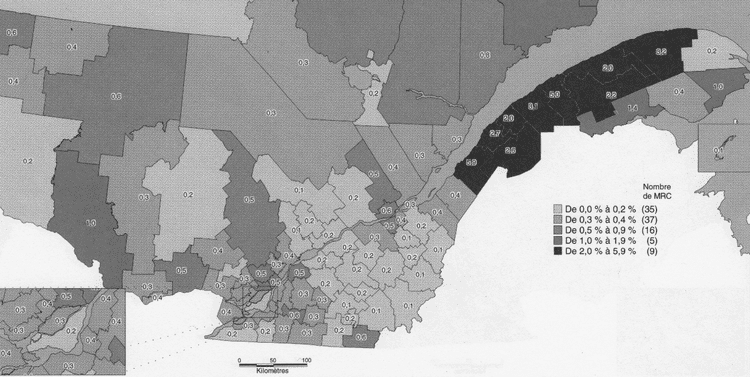 | ||
The term regional county municipality or RCM (French: municipalité régionale de comté, MRC) is used in Quebec to refer to one of 87 county-like political entities. In some older English translations they were called county regional municipality.
Contents
- Sled movie abitibi qu bec
- Governance and responsibilities
- Municipalities not belonging to an RCM
- RCMs as geographical units
- Census divisions
- Geographical code of Quebec
- References
Regional county municipalities are a supralocal type of regional municipality, and act as the local municipality in unorganized territories within their borders. The system of regional county municipalities was introduced beginning in 1979 to replace the historic counties of Quebec. In most cases, the territory of an RCM corresponds to that of a census division, however there are a few exceptions.
Some local municipalities are outside any regional county municipality (hors MRC). This includes some municipalities within urban agglomerations and also some aboriginal lands, such as Indian reserves that are enclaves within the territory of an RCM but not juridically part of it. Where complete territorial coverage is desired, for example for the census, the Indian reserve enclaves are added in to create "geographical RCMs", and the urban agglomerations are considered to be "territories equivalent to an RCM".
For a list of RCMs and equivalent territories, see List of regional county municipalities and equivalent territories in Quebec.
Sled movie abitibi qu bec
Governance and responsibilities
The council of a RCM is composed of the mayors of the member municipalities as well as a prefect.
The prefect is usually elected by and from the council by secret ballot. Universal suffrage may also be used. The prefect's mandate is 2 years when elected by council or 4 years when elected by universal suffrage.
A MRC must:
Municipalities not belonging to an RCM
RCMs, in their definition as political units, do not cover the entire territory of Quebec. The local municipalities of Quebec (and equivalent Aboriginal territories) not belonging to an RCM fall into the following categories:
RCMs as geographical units
For provincial statistical purposes, the Institut de la Statistique du Québec uses the following system so that the entire territory of Quebec is divided into 104 units known as municipalités régionales de comté géographiques (MRCG) "geographical regional county municipalities".
Indian reserves which would, but for their status as Indian reserves, belong to a certain RCM in the political sense are included in the geographical RCM corresponding to that RCM. There are 86 MRCGs of this kind, one for each RCM.
The rest of the province is grouped into 16 "territories equivalent to an RCM" (French: territoires équivalents à une MRC or territoires équivalents, abbreviated TÉ), which are also considered to be MRCGs. This is done as follows.
Census divisions
Census divisions (CDs) are used for statistical purposes by Statistics Canada. Quebec is divided into 98 CDs, each of which is assigned a unique two-digit geographical code. For the most part, census divisions consist of a single RCM or TE (territory equivalent to an RCM), exactly as defined above. The only exceptions are five census divisions divided into 11 RCMs or TEs, two or three each. For a list, see List of regional county municipalities and equivalent territories in Quebec#Use as census divisions.
Geographical code of Quebec
All local municipalities, equivalent Aboriginal territories, Indian settlements and unorganized territories in Quebec are assigned a unique five-digit geographical code. The first two-digits are the code of the census division in which the municipality is located. For a list of all municipalities in Quebec together with their legal status, geographical code and date of incorporation, see List of the official municipalities of Québec, Institut de la Statistique du Québec (ISQ). Note that the ISQ includes the six Indian settlements in the list, whereas the Répertoire des municipalités of the Ministère des Affaires municipales et régionales does not list them as separate from the legal municipalities or unorganized territories in which they are located. Both sources include all other types of Aboriginal communities.
